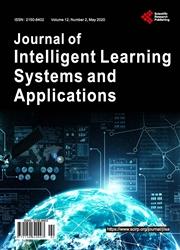Application of the Adaptive Neuro-Fuzzy Inference System for Optimal Design of Reinforced Concrete Beams
引用次数: 4
Abstract
Using a genetic algorithm owing to high nonlinearity of constraints, this paper first works on the optimal design of two-span continuous singly reinforced concrete beams. Given conditions are the span, dead and live loads, compressive strength of concrete and yield strength of steel; design variables are the width and effective depth of the continuous beam and steel ratios for positive and negative moments. The constraints are built based on the ACI Building Code by considering the strength requirements of shear and the maximum positive and negative moments, the development length of flexural reinforcement, and the serviceability requirement of deflection. The objective function is to minimize the total cost of steel and concrete. The optimal data found from the genetic algorithm are divided into three groups: the training set, the checking set and the testing set for the use of the adaptive neuro-fuzzy inference system (ANFIS). The input vector of ANFIS consists of the yield strength of steel, compressive strength of concrete, dead load, span, width and effective depth of the beam; its outputs are the minimum total cost and optimal steel ratios for positive and negative moments. To make ANFIS more efficient, the technique of Subtractive Clustering is applied to group the data to help streamline the fuzzy rules. Numerical results show that the performance of ANFIS is excellent, with correlation coefficients between the three targets and outputs of the testing data being greater than 0.99.自适应神经模糊推理系统在钢筋混凝土梁优化设计中的应用
由于约束高度非线性,本文首先采用遗传算法对两跨连续单钢筋混凝土梁进行优化设计。给定的条件是跨度、恒活荷载、混凝土抗压强度和钢的屈服强度;设计变量为连续梁的宽度和有效深度以及正负弯矩的钢比。根据ACI建筑规范,综合考虑抗剪强度和最大正负弯矩要求、受弯钢筋发展长度和挠度使用要求,建立约束条件。目标函数是最小化钢和混凝土的总成本。从遗传算法中找到的最优数据分为三组:训练集、检查集和测试集,用于自适应神经模糊推理系统(ANFIS)。ANFIS的输入向量包括钢的屈服强度、混凝土的抗压强度、自重、跨度、梁的宽度和有效深度;它的输出是最小的总成本和最优的钢的比例为正负弯矩。为了提高ANFIS的效率,采用了减法聚类技术对数据进行分组,以简化模糊规则。数值结果表明,该算法性能良好,3个目标与测试数据输出的相关系数均大于0.99。
本文章由计算机程序翻译,如有差异,请以英文原文为准。
求助全文
约1分钟内获得全文
求助全文

 求助内容:
求助内容: 应助结果提醒方式:
应助结果提醒方式:


